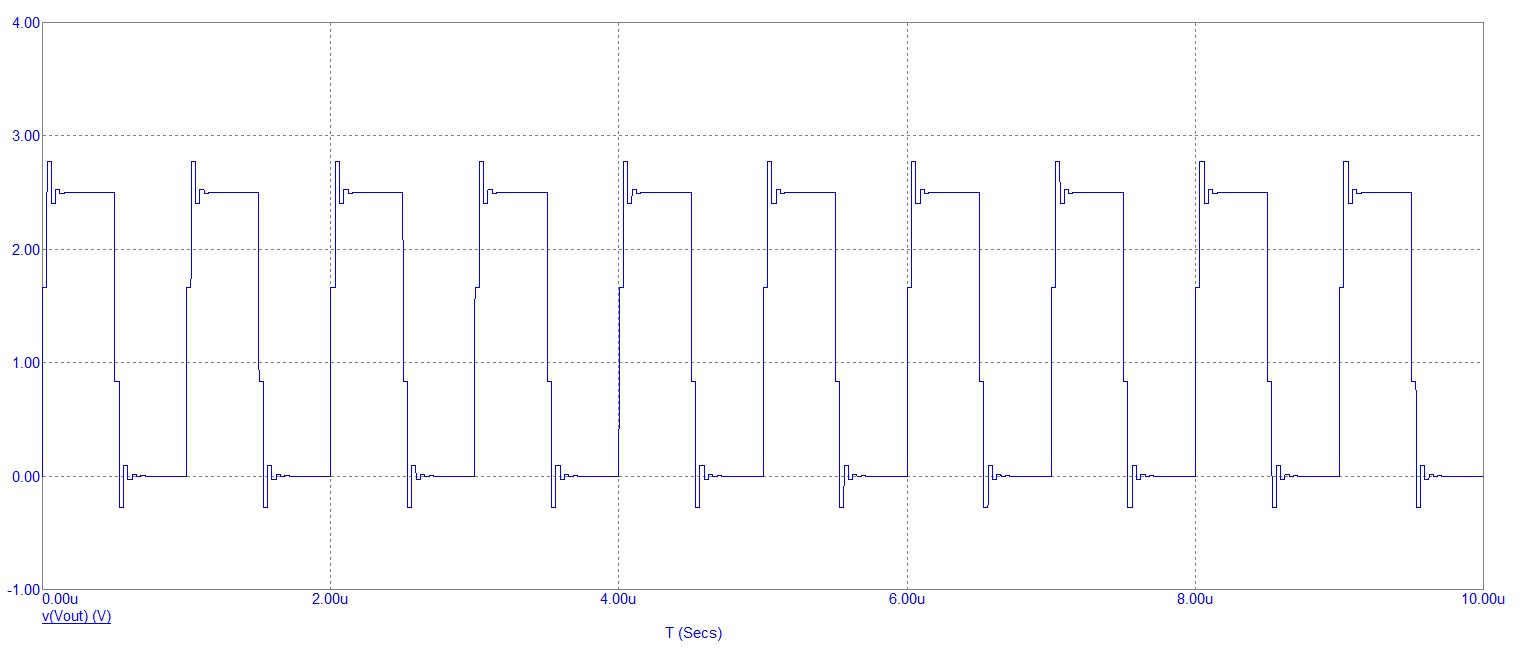clocked at 1MHz
Assuming that you might be interested in anything up to the 10th harmonic of 1 MHz (aAs a general rule of thumb when looking atinto data corruptions), on mis-terminated lines anything up to the 10th harmonic would be considered. So if the basic data rate is such that it looks like 1 MHz we might consider 10 MHz to be a good basis for analysis.
The wavelength of 10 MHz is 30 metres and, another the rule of thumb is that anythingany transmission line longer than about one-tenth of a wavelength is going tocould potentially be problematic if badly terminated. That's a line length of 3 metres.
What is the best way to handle this in your opinion?
Hence, 3 metresthere isn't really going to posebe a problem to either the data down the stub (30 cm) or the original data path (10 cm). If in doubt, connect to the stub via 1 kΩ resistors and use a differential amplifier to monitor the data signal.
Simulation
1 MHz output signal (Vout): -
I don't think the edge disruptions are significant for RS-422 integrity. If you do something like this: -
You'd be hard-pressed to see any degradation on your main RS-422 signal at all. And the monitor signal also looks good but, as expected is attenuated by 10:1.
Remember, my sims have used unbalanced signals and coax so, you'd need to split the 1 kΩ resistor into two 500 Ω resistors for proper RS-422.
As an afterthought...
If I made the monitor line 3 metres long and didn't use any resistors, I'd see this disruption on the main signal: -
It's still OK and wouldn't throw up any significant corruptions.
If I made the monitor line 10 metres long, the main signal is starting to look crappy: -





